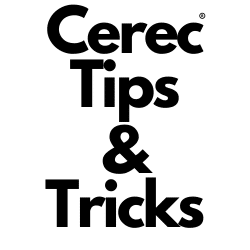Introduction
When it comes to congenitally missing teeth, bonded porcelain Maryland bridges are one of the most reliable, conservative and popular solutions. Among various types of dental bridges, the Maryland bridge holds a significant place due to its conservative solution for developing teenagers and ease of creation. In this article, we will guide you on how to make a Maryland Bridge using Cerec.
Step by Step Guide to Creating a Maryland Bridge with Cerec
Step 1: Identifying the Abutment Teeth and Pontic
The first step in creating a Maryland Bridge using Cerec starts in the administrative phase. The teeth that will act as the bridge’s abutments (the teeth that the wings of your Maryland bridge will bond to) need to be identified. The missing tooth is termed as the ‘pontic’. For example, if a patient is missing tooth #7, the abutment teeth would be #6 and 8, assuming you’re using a double-wing Maryland bridge. Tooth #7 would be identified as the pontic.
Step 2: Taking a Precise Intraoral Scan
The next crucial step is to take an intraoral scan. Make sure to capture all the surfaces of the abutment teeth accurately. A detailed scan will serve as the blueprint for designing your Maryland bridge.
Step 3: Choosing Path of Insertion
Choose the exact path you want the restoration to take when bonding it in place – it will significantly affect the thicknesses of the wings when milling.
Step 4: Marginating
Draw your margins on your abutment teeth. Whether you prepare the teeth or not, you can outline the margin of the wing. This works very well on teeth with more defined anatomy (it can act as a positive stop when cementing in place). You can also extend your outline of your wing to the incsal edge and cut it back after cementation – this would act as a positive stop (might be annoying to cut back).
Step 5: Designing/Staining the Pontic
When designing a pontic in the anterior, it’s best to use an anatomical-formed pontic to create the best esthetics – extending the coronal portion of the pontic design further out onto the buccal ridge works very well. Once milled, darker staining applied to interproximal of the pontic give a great depth to the restoration.
Conclusion
Creating a Maryland Bridge with CEREC technology is a straightforward and efficient process. It allows dentists to offer patients a durable, custom-made solution for missing teeth in a matter of hours rather than weeks. The ability to make these even without prepping into adjacent teeth is an amazing tool to have! CEREC’s advanced technology delivers precision, ensuring a comfortable fit and natural look.
Remember, every patient is unique, and the specifics of each procedure may vary. But with these basic steps, you’re well on your way to mastering the creation of Maryland bridges with CEREC.
